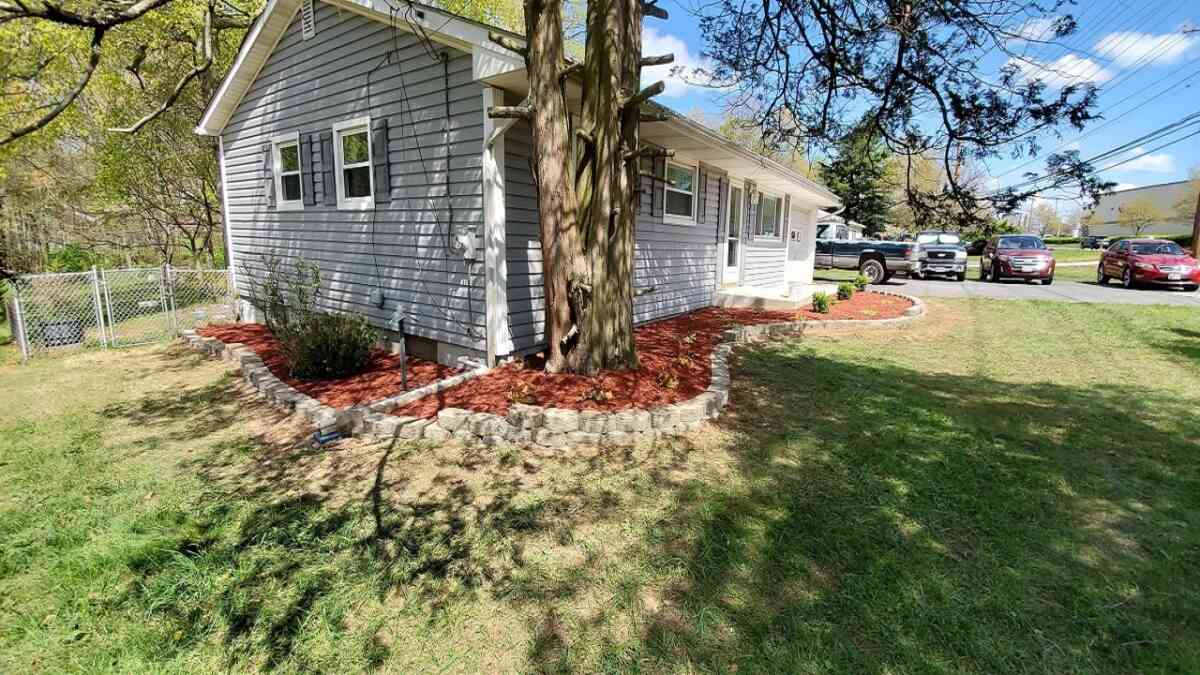Mulch Around Trees Ideas
Mulch is a great way to improve conditions of the soil surrounding your trees. It helps prevent soil from getting compacted and also helps roots to grow and gain access to oxygen faster. Clay soils too can benefit from mulching trees. We'll talk about different mulch options, like planting flowers around trees, repurposing holiday needles and making use of shredded bark and weed suppressant fabrics.
Flowering plants in the mulch around trees
Mulch that is placed around trees can be used to plant flowers. This can add colour and decrease water loss. It can also help stop weeds from growing. The mulch helps keep your soil moist and also prevents weed growth. Trees need regular watering since they are thirsty. In addition, mulch eventually breaks down into compost, which is a rich, nutrient-filled substance.
Be aware of the dimensions of your trees prior to when you decide to plant flowers. It's a good idea to plant plants that are small with tiny rootballs. This will prevent the flowers from causing damage to the tree roots. When you plant flowers, put them at least 2 feet from the tree's trunk.
Mulch mix should contain an assortment of green and brown materials. Mulch mix should include leaves, branches, and stems. Mulch should be about 2 inches thick. Mulch helps improve the soil's fertility and is rich in nutrients, such as nitrogen. Mulch will aid the plants to grow healthy roots and flowering.
Repurposing Christmas tree needles for mulch
Instead of throwing away holiday tree needles, you can use them for mulch. Pine needles are rich in nutrients that are beneficial for the soil. To deter insects, you can add some burnt ash or a small amount of it to your compost. It is crucial to not use holiday tree needles as firewood right away after the holiday season. You should allow them to dry for at minimum 4 to 6 months prior to when you decide to use them. Also, sap from evergreen trees can be extremely flammable, and may cause fires in your home.
Christmas tree needles are not only good for the soil, but also great for landscaping. After they dry they can be used to mulch your garden. It is completely free of moisture and mold and can be a fantastic addition to any landscape. Apart from mulch, you can make use of the pinecones as bird feeders. Pinecones can be used to hang peanut butter-coated pinecones, and placed on top of ground covering plants. Additionally, you can use pine boughs for covering perennial beds to assist in reducing frost heaving as well as stimulate the growth.
Pine needles are a fantastic mulch for perennial plants. They can protect soil from erosion and give garden plants a boost of nutrients. They also create a excellent mulch for the roots of evergreen trees.
The bark shreds can be utilized as mulch
Shredded bark is a great option to create mulch around trees to improve the appearance of your garden and the quality of your soil. It can also help in reducing herbicides since it's a good supply of nutrients. There are various types of mulch made from bark which include softwood, hardwood, and compost. Each has its own benefits and is suitable in a variety of landscaping applications. The chunky bark is ideal for pathways and borders as well as fine crushed bark is ideal for delicate flowers and plants. Using bark as mulch will require regular replenishment, though the frequency will depend on the climate and size of the garden.
Another great advantage of mulch is that it can in the growth of beneficial fungi. Mulch is frequently regarded as a pest by gardeners. But, fungi can be beneficial for trees and can stop the spread of disease pathogens. Mulch serves as a barrier to pests that could trigger diseases and makes it more difficult to get them into the tree.
Mulch made of weed suppressant fabrics
You can also cover the ground around trees with landscaping fabric that contains a weed suppressant. This is a fantastic way to keep weeds kept under control and also provide trees with the space they require. This allows for better circulation of air and water. The fabric should be removed once the trees are strong enough to stand up to the growing weeds.
Weed control fabric comes in a variety of types. The most common type is made of polypropylene or linen fibers and is a bit slit to prevent the growth of weeds upward. Mulch is typically laid on top of fabric, keeping it in place while blockage of sunlight. This hinders growth. Mulch isn't a natural mulch but it can help reduce weed growth and reclaim garden beds.
Wood chips are another kind of fabric. The chips are biodegradable and break into soil. The soil layer is perfect for weed seeds to grow. Utilizing weed-control fabric as mulch on trees is a great way to protect your plants from weeds. It is important to be aware that the synthetic barrier that is used to prevent the growth of weeds blocks the microbial processes that normally occur within your soil. The fabrics can also be purchased in heavier versions which can be used to irrigate or retain walls.

